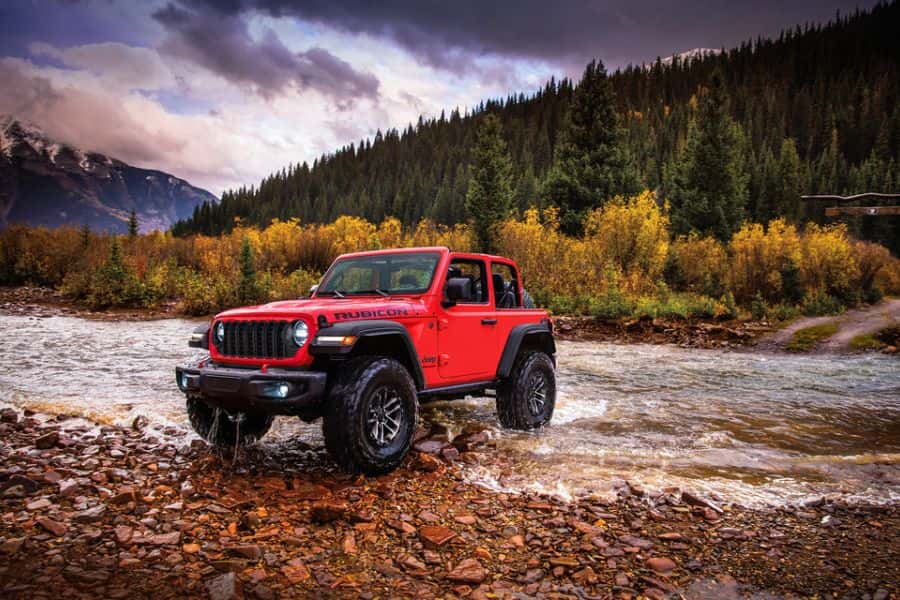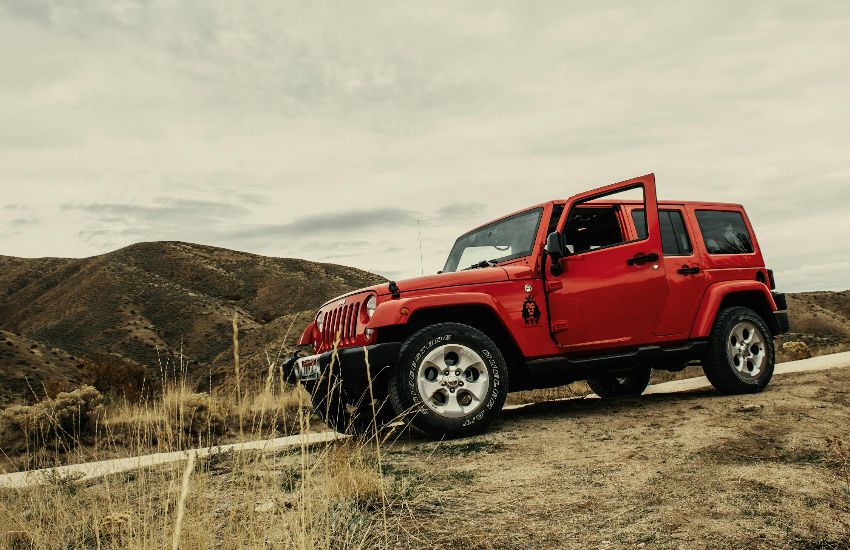You love your Jeep Wrangler for its rugged style and off-road spirit, but you might be wondering—how long can your Jeep really last? Whether you’re planning to keep it for years or just curious about its lifespan, knowing what affects a Wrangler’s durability can save you time, money, and headaches down the road.
You’ll discover the key factors that influence how many miles your Jeep can handle, which model years to watch out for, and simple steps you can take to extend its life. Keep reading to learn how to make your Wrangler go the distance and enjoy every adventure without worry.
Jeep Wrangler Lifespan
The Jeep Wrangler is built tough for off-road adventures and daily drives. Its lifespan depends on care, driving style, and environment. With proper maintenance, a Wrangler can serve well for many years.
Rust and heavy off-roading can shorten its life. Routine checks and repairs keep it running longer. Many owners enjoy Wranglers that have traveled well beyond 100,000 miles.
Average Mileage Expectancy
Most Jeep Wranglers reach around 200,000 miles with regular maintenance. This mileage suits daily use and light off-road trips. Oil changes, brake checks, and fluid replacements help achieve this range.
Driving mostly on highways can increase the lifespan. Avoiding harsh terrain reduces wear on parts. Proper care ensures the engine and transmission stay strong.
High Mileage Experiences
Some Jeep Wranglers have crossed 300,000 miles or more. These high-mileage Jeeps show the model’s durability. Owners often replace worn parts like the clutch and suspension over time.
Regular inspections and fixing small issues early prevent major breakdowns. A well-kept Wrangler can last decades. It remains reliable even after heavy use.
Key Longevity Factors
Several key factors influence how long a Jeep Wrangler can last. Understanding these factors helps owners keep their vehicle running smoothly for many years. The lifespan depends on care, use, and environmental conditions.
Proper maintenance, driving style, exposure to rust, and common repairs all play roles in the Jeep’s longevity. Each factor affects the vehicle’s health and performance over time.
Maintenance Importance
Regular maintenance is critical for a Jeep Wrangler’s lifespan. Changing the oil on time keeps the engine healthy. Checking fluids, brakes, and tires prevents major problems. Following the service schedule reduces wear and tear. Clean filters and timely part replacements improve reliability.
Impact Of Driving Habits
How you drive affects how long your Wrangler lasts. Gentle driving on highways causes less stress than rough off-roading. Hard use on rocks or mud can wear parts faster. Smooth acceleration and braking extend the vehicle’s life. Avoiding extreme driving conditions helps preserve the Jeep.
Rust And Corrosion Risks
Rust is a big threat to Jeep Wranglers, especially in wet or snowy areas. Salt on roads accelerates corrosion on the frame and undercarriage. Inspecting these areas often can catch rust early. Applying rust protection slows damage. Keeping the Jeep clean and dry reduces corrosion risks.
Common Repair Issues
Some repairs are frequent in Jeep Wranglers and affect longevity. Head gasket leaks may occur in older models. Transmission problems can arise with high mileage. The ABS module sometimes fails, impacting brake performance. Fixing these issues promptly keeps the Jeep safe and running well.
Maximizing Jeep Lifespan
Maximizing the lifespan of your Jeep Wrangler ensures you enjoy many years of adventure. Proper care and smart habits keep your Jeep running smoothly. Focus on key areas to protect your investment and improve reliability.
Sticking To Maintenance Schedules
Regular maintenance is vital for Jeep longevity. Follow the manufacturer’s recommended service intervals. Change the oil and filters on time. Check fluids, brakes, and tires often. Timely repairs prevent small issues from becoming big problems. Use quality parts and fluids suited for your Jeep. Keep a record of all maintenance for reference. This habit helps spot patterns or recurring problems early.
Rust Prevention Tips
Rust can damage your Jeep’s frame and parts quickly. Inspect the undercarriage and body regularly, especially after winter. Clean off mud, salt, and debris that hold moisture. Apply rust-proof coatings or sealants to vulnerable spots. Store your Jeep in a dry, covered area when possible. Address any paint chips or scratches immediately. Rust prevention keeps your Jeep strong and safe.
Balancing Off-road Use
Off-roading is fun but hard on your Jeep. Use it moderately for rough terrain to avoid excessive wear. Choose trails suitable for your Jeep’s capabilities. Inspect suspension, tires, and drivetrain after every trip. Wash off dirt and mud to prevent corrosion. Mixing highway driving with occasional off-roading extends your Jeep’s life. Smart use balances thrill with durability.

Credit: www.postfallschryslerjeepdodgeram.com
Model Years To Approach With Caution
Not all Jeep Wrangler model years offer the same reliability. Some years have known issues that can affect longevity. Buyers should be aware of these to avoid costly repairs and maintenance. Below are key model years to approach with caution.
2007-2008 Issues
These model years had problems with the transfer case. Drivers reported difficulty shifting into four-wheel drive. Some experienced premature wear of the transmission. Electrical glitches were also common, affecting lighting and dashboard functions. Repair costs for these issues can add up quickly.
2012 Recall Concerns
The 2012 Wrangler faced recalls related to the fuel system. A leak in the fuel tank could increase fire risk after a crash. Jeep issued fixes, but some owners missed the recall notice. Checking for completed recall repairs is essential when buying this model year.
2014-2016 Reliability Problems
These years showed a rise in engine oil leaks. Many owners reported coolant leaks causing engine overheating. Suspension components also wore out faster than expected. Electrical system faults, such as faulty sensors, were reported frequently. These issues may lead to higher maintenance costs.
Jeep Wrangler Reliability Trends
The Jeep Wrangler has earned a strong reputation for durability and off-road capability. Its reliability trends show a mixed bag of strengths and weaknesses that affect how long it lasts. Understanding these trends helps owners maintain their vehicles better.
Some issues arise more often in older models or high-mileage Wranglers. These affect key areas like the electrical system, steering, suspension, engine, and transmission. Knowing these common problems supports smarter maintenance and repairs.
Electrical System Weaknesses
The electrical system in Jeep Wranglers can face issues over time. Problems with wiring and connectors often cause faults. Dashboard lights or gauges may stop working correctly. Older models sometimes struggle with battery drain or faulty alternators. Regular checks of the electrical components help prevent sudden failures.
Steering And Suspension Challenges
Wranglers often face wear in steering and suspension parts. This includes ball joints, tie rods, and bushings. Rough roads and off-road driving increase this wear. Drivers may notice loose steering or uneven tire wear. Timely replacement of worn parts keeps handling safe and smooth.
Engine And Transmission Reliability
The engine and transmission are generally strong but not without faults. Some Wranglers show head gasket leaks or overheating issues after many miles. Transmission problems like slipping or rough shifting may appear in higher mileage vehicles. Regular fluid changes and inspections extend the life of these vital parts.
Owner Insights And Experiences
Jeep Wrangler owners share many stories about their vehicles’ durability and performance. Their experiences provide valuable insight into how long these rugged SUVs can last. Learning from real users helps set clear expectations for potential buyers and current owners.
Many owners highlight the Wrangler’s toughness and ability to handle rough terrain. Yet, long-term ownership also reveals areas needing attention to keep the vehicle running smoothly. Understanding both positive experiences and common issues can guide better care and usage.
Long-term Ownership Stories
Some Jeep Wranglers reach over 200,000 miles with proper care. Owners credit regular maintenance and gentle off-roading for their vehicle’s longevity. Many report using their Wranglers daily for over 10 years. Enthusiasts enjoy upgrading parts to improve performance and comfort. These stories show that Wranglers can last well beyond the average SUV lifespan.
Common Complaints
Owners often mention problems with the transmission and head gaskets. Rust, especially on older models, is a frequent concern. Some drivers find the ride noisy and less comfortable on highways. Electrical issues related to the ABS system appear in certain years. Addressing these complaints early helps prevent bigger repairs later.
Reliability Ratings By Year
Wranglers from 2010 to 2015 generally receive good reliability ratings. Models after 2018 show improvements in build quality and fewer engine problems. Early 2000s versions have mixed reviews due to common mechanical failures. Newer Wranglers benefit from updated technology and stronger components. Checking reliability scores by year assists in choosing the most durable model.

Credit: www.simivalleychryslerdodgejeepram.com
Frequently Asked Questions
How Many Miles Can Jeep Wranglers Last?
Jeep Wranglers can last 200,000 to 300,000 miles with proper maintenance. Regular care and gentle driving extend lifespan. Avoid excessive off-roading and rust to maximize durability.
Can A Jeep Wrangler Last 300,000 Miles?
A Jeep Wrangler can last 300,000 miles with regular maintenance and careful driving. Avoid extreme off-roading and protect against rust. Proper repairs and following service schedules extend its lifespan significantly.
Are Jeeps Good After 200k Miles?
Jeeps can perform well after 200k miles with proper maintenance and care. Regular servicing, rust protection, and gentle driving extend their lifespan. Avoid harsh off-roading to prevent premature wear. Some models may have reliability issues, so check history before buying a high-mileage Jeep.
What Year To Stay Away From A Jeep Wrangler?
Avoid Jeep Wrangler models from 2007-2008 due to death wobble and electrical issues. Also, skip 2012, 2014, 2015, and 2016 for frequent recalls and reliability problems.
Conclusion
A Jeep Wrangler can last many years with proper care. Regular maintenance keeps the engine running smoothly. Avoiding harsh off-road use helps protect key parts. Rust prevention is vital, especially in wet climates. Knowing common issues by model year aids better upkeep.
A well-maintained Wrangler can reach over 200,000 miles. Patience and attention extend the vehicle’s lifespan. This makes the Jeep a durable choice for adventure lovers.

